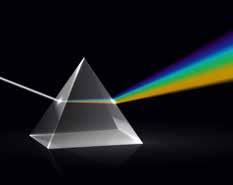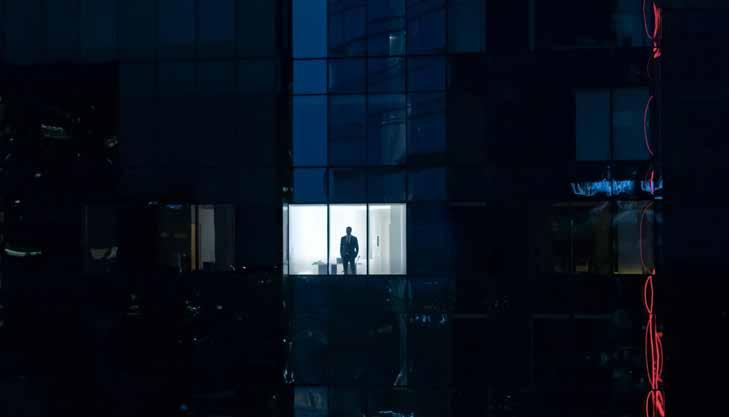
7 minute read
WORKING KNOWLEDGE
LG20: Lighting and Facilities Management will be the first guidance issued by the SLL specifically for FMs. Its author Sophie Parry outlines why the publication was needed and what areas it covers
erhaps the first issue to address P is, if you work in facilities management, why do you need LG20? I have worked with many facilities managers who at some time have to carry out work to a lighting installation. That could be repairs or remedial work or even replacing the installation because it is at the end of its useful life due to obsolescence, or the more recent trend of upgrading to LED lighting as an energy-saving initiative.
Advertisement
Facilities managers may or may not be experts in lighting and will therefore possibly depend on those they believe are the experts to help them with the lighting works they need to undertake for their clients.
I think it's fair to say that in all walks of life we have all at some point placed our faith in those we believe are experts, only to find that the outcome is not quite what we or the client was expecting and that a lesson has just been learned the hard way.
It is easy to fall into the trap of simply replacing existing lighting with fittings that claim the lowest energy consumption, for instance. Chasing down power consumption to cut the electricity bill and reduce the payback period is the name of the game – right? Well, not exactly. Think for a minute about the people who will have to work, study or enjoy their recreational time under this super low energy update. If the quality of light does not meet established metrics, then the experience of the people may well be less than enjoyable, an outcome unwittingly introduced by an uninformed, so-called lighting ‘upgrade’.
The direct replacement of older technology lamps (usually fluorescent) with LED direct fit lamps can also be problematic. They may fit, they may light up and the energy consumption may well be reduced. It’s doubtful, though, that the quality of light output from the luminaire will provide the required quality of light. Good energy efficiency is a valid metric, but it should never be at the expense of appropriate electric lighting quality, relevant to the application in the space concerned.
Lighting can be a complex subject, but like most complex subjects, it can be broken E
5
down into manageable building blocks which helps the non-lighting expert understand the basic principles and therefore make informed decisions when tasked with specifying and/or project managing lighting-based works.
LG20 has been reviewed by representatives from the CIBSE FM Group to ensure as far as possible that the content has been presented in such a way that it is useful and relevant to facilities managers.
WHAT LG20 COVERS LG20 takes the reader on a journey through the lighting activities that a facilities manager may find themselves involved with.
PART 1: THE STATUS QUO
The first section starts off with an introduction and a review of key lighting terminology and definitions that may or may not be familiar to a facilities manager or perhaps they were afraid to ask about. The beginning is a good place to bring everyone up to the same level.
Assuming the facilities manager is only required to maintain a lighting installation, the next section covers obligations under COSHH, RoSH and WEEE legislation, as well as operational requirements, periodic maintenance, spares holding and maintenance replacements.
The time may come when due to obsolescence, or because it is just not economical to continue to maintain and repair the lighting installation, it becomes necessary to inform the client that upgrade works are required.
At this point, the client is likely to ask the facilities manager to develop a business case, outline the project specification and
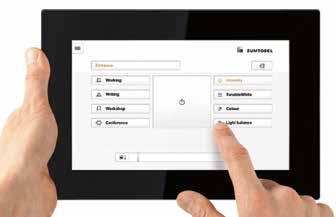
Exterior lighting design where light pollution has been kept to a minimum, satisfying local planning authority considerations
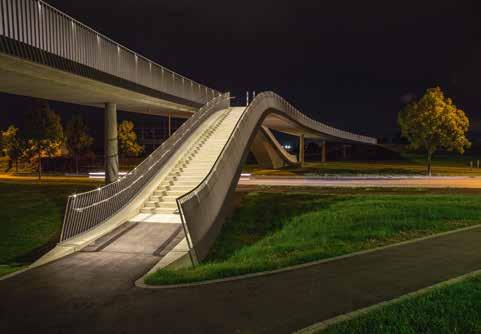
produce a project budget. To help with this, templates have been included that help the reader create a condition report and then a performance specification for the required works.
PART 2: THE RIGHT LIGHT
So now the reader is embarking on discussions and consultations on behalf of the client to ensure a credible update solution is developed and costed, ready for construction. The facilities manager may choose to undertake all of this solution development or decide to form a team of ‘experts’ to help them get from A to B so that they can present the client with a viable, compliant and costed solution.
Part 2 explores and provides examples
WiFi-enabled scenesetting arrangement
of the key requirements and considerations when developing a lighting design. So what is this language of the lighter and what does it all mean? The following concepts and considerations are all defined and explained:
Lighting levels Uniformity Glare reduction Colour rendering Colour temperature Colour fidelity Maintenance factor Inrush currents How long do lamps and in particular, LED sources/modules last ? External lighting and light pollution
LIGHTING CONTROLS The lighting may be good quality, but is it operating at the right time? The lighting control system is clearly key to the success of the installation. Lighting controls can be anything from a simple one-way switch through to a fully networked, automated system with a operating screen and interfaces to other building services. Some terminology and acronyms are explained, as well as the context in which these various building blocks of lighting controls operate:
Timed control Scene setting or control Presence detection
Modelling the proposed external lighting for a sports centre for a client presentation
Daylight linking: blending daylight and electric light
characteristics PREDICTIVE MODELLING Also addressed is the question of whether the light is going to the right place. It is common practice to model or simulate lighting proposals to confirm that the light is going where expected, and at the required illuminance levels, as part of compliance checking of proposed lighting designs.
EMERGENCY LIGHTING
This section explores the remit of the ‘responsible person’ who has legal obligations under UK law to ensure that the emergency lighting installation is fit for purpose and ready for operation at all times. Often the role of the responsible person is either the client, informed by the facilities manager, or the role is fully delegated to the facilities manager. Also covered is the ‘as built’ information and the periodic checks/maintenance and repairs that are required for emergency lighting.
PROJECT MANAGEMENT
It is a real possibility that the facilities manager is asked by the client to coordinate or even develop a significant lighting installation project in an occupied building. This section provides guidance on how to complete a successful project outcome in these more challenging conditions. The development of a successful project proposal may also include the development of the business case. LG20 includes examples relating to return on investment projections, such as carbon footprint reduction, compliance checks against Part L of the Building Regulations, Leni calculations, as well as establishing if the emergency lighting is fit for purpose.
CASE STUDIES
LG20 concludes with three project case studies that have been carried out in conjunction with facilities managers. These cover updating the lighting in a data centre hall; updating the emergency lighting in a six-storey office building, and repurposing bespoke luminaires and following the principles of the circular economy.
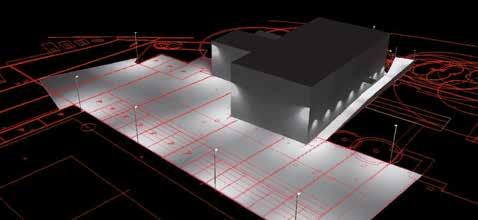
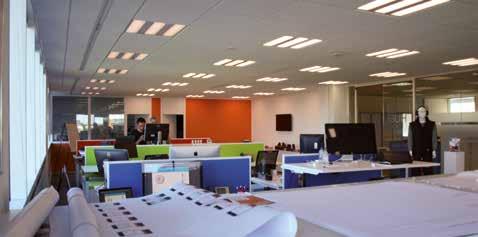
CONCLUSION
Beyond the periodic maintenance of lighting installations, there is always a demand on facilities managers to provide clients with proposals and updates to replace lighting systems. Currently there is an increase in refurbishment work due to obsolescence, advances in lighting technology and the desire to lower energy consumption.
LG20 is written in a way to help and inform facilities managers involved in such works to arrive at informed decisions and successful lighting project outcomes.
LG20: Lighting and facilities management is now available to be downloaded (free of charge for members) from the CIBSE
Absence detection Motion detector operating Photocells Daylight linking Constant illuminance adjustment Dimming and regulation
Knowledge Portal: www.cibse.org/knowledge Sophie Parry, FSLL, is a qualified electrical and electronics engineer with more than 30 years’ experience in building services. She works for the Zumtobel Group as a technical applications consultant. Vice chair of the SLL technical and publications committee, she also authored LG14 on lighting controls





